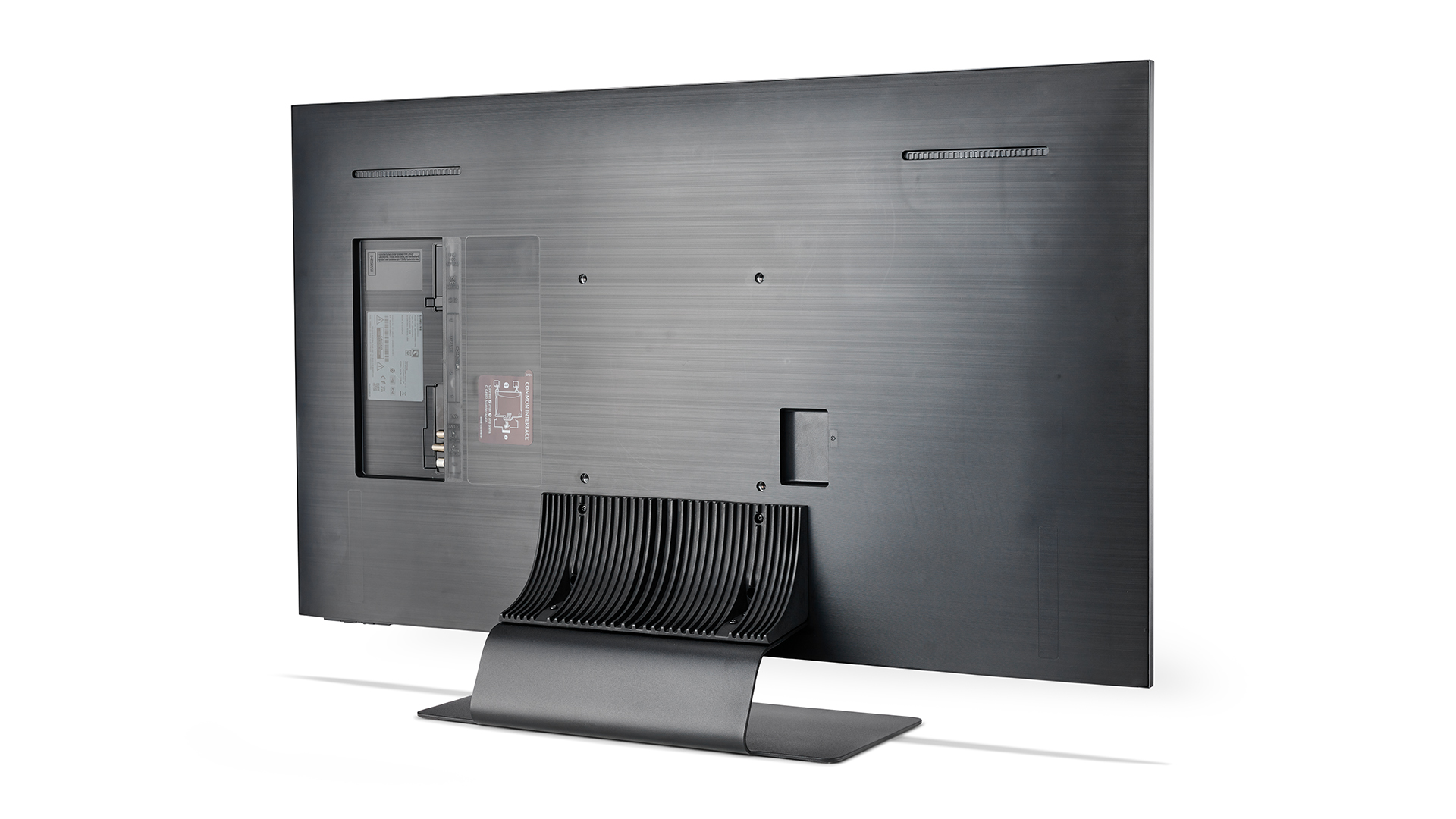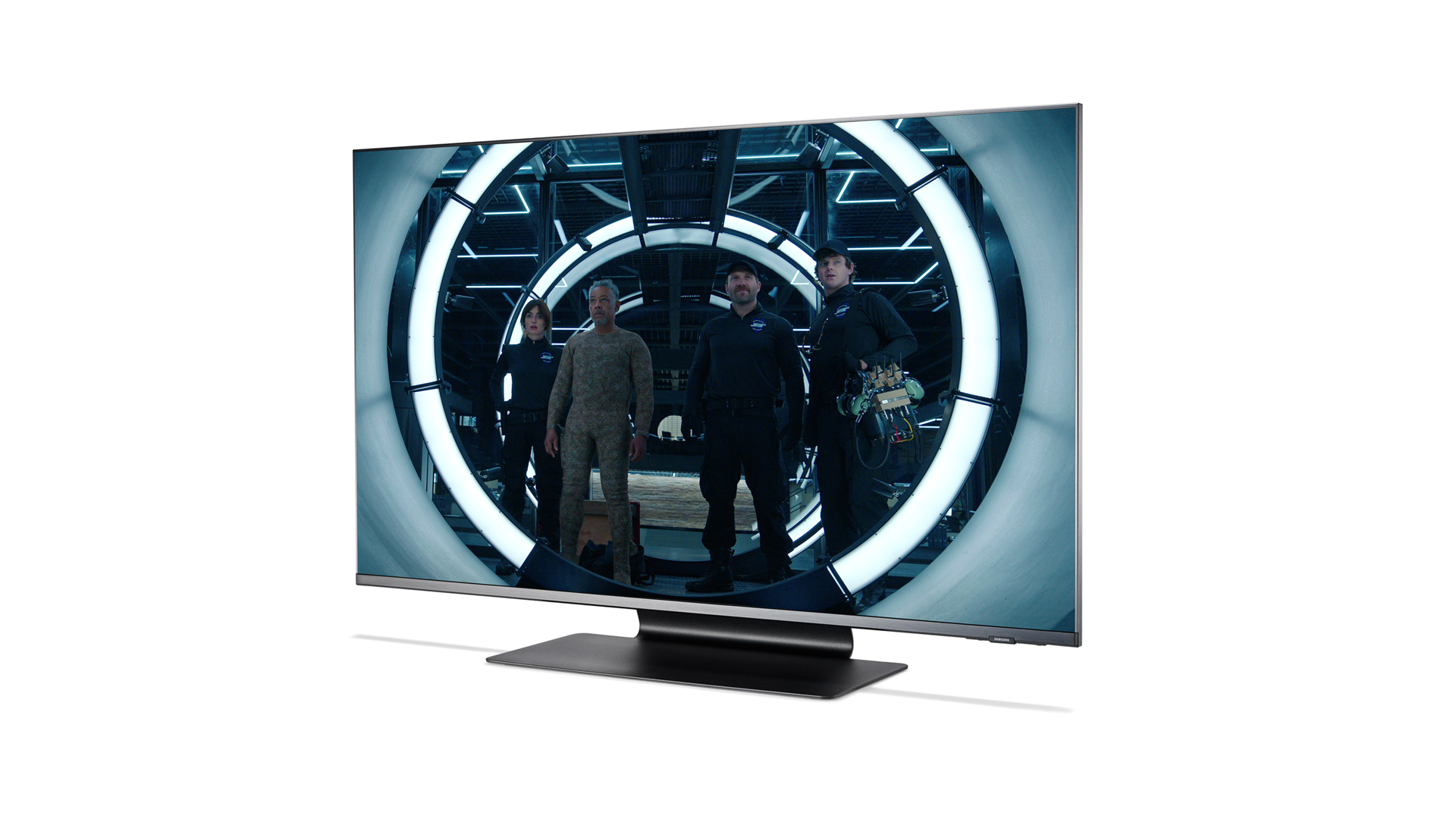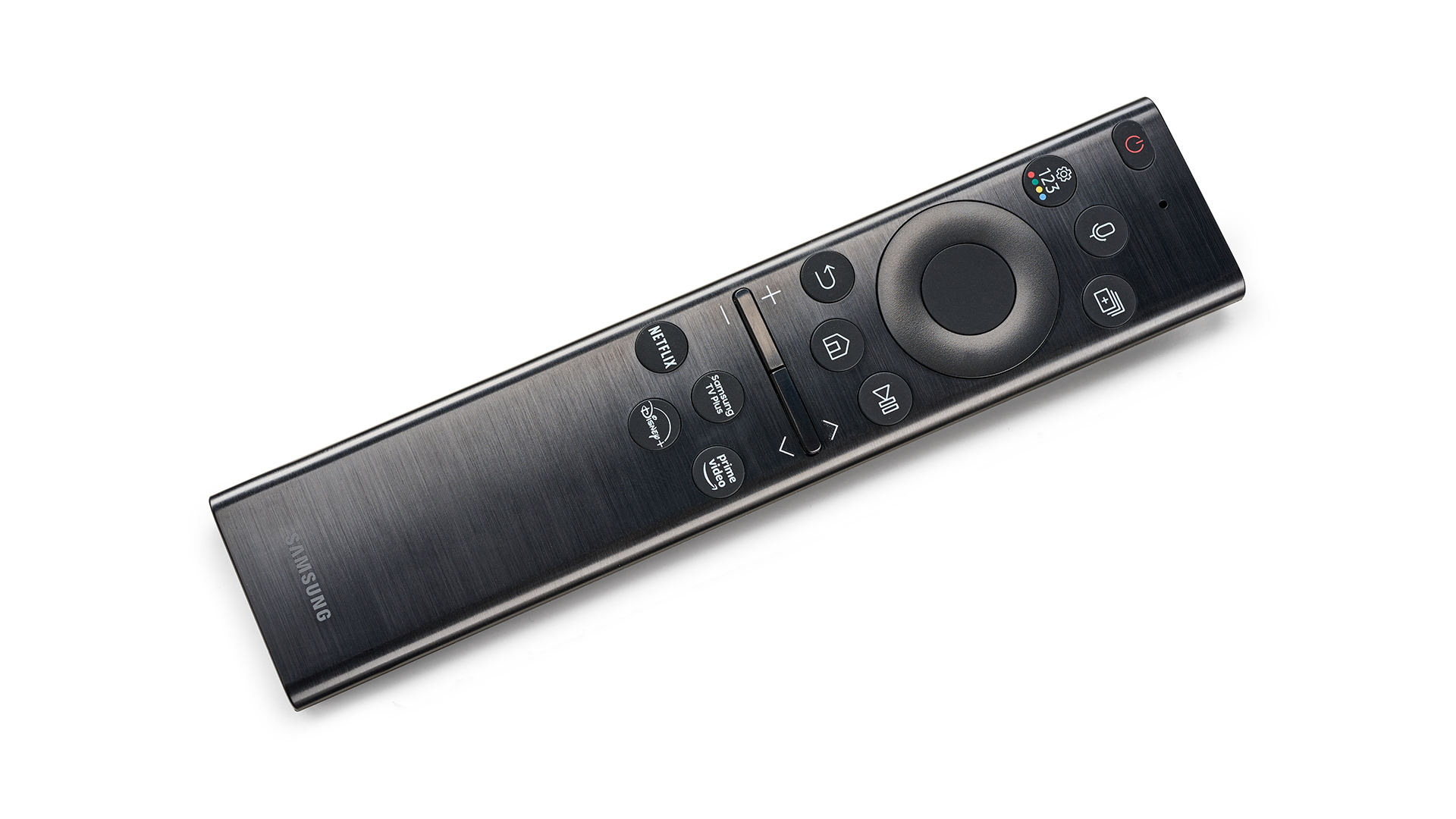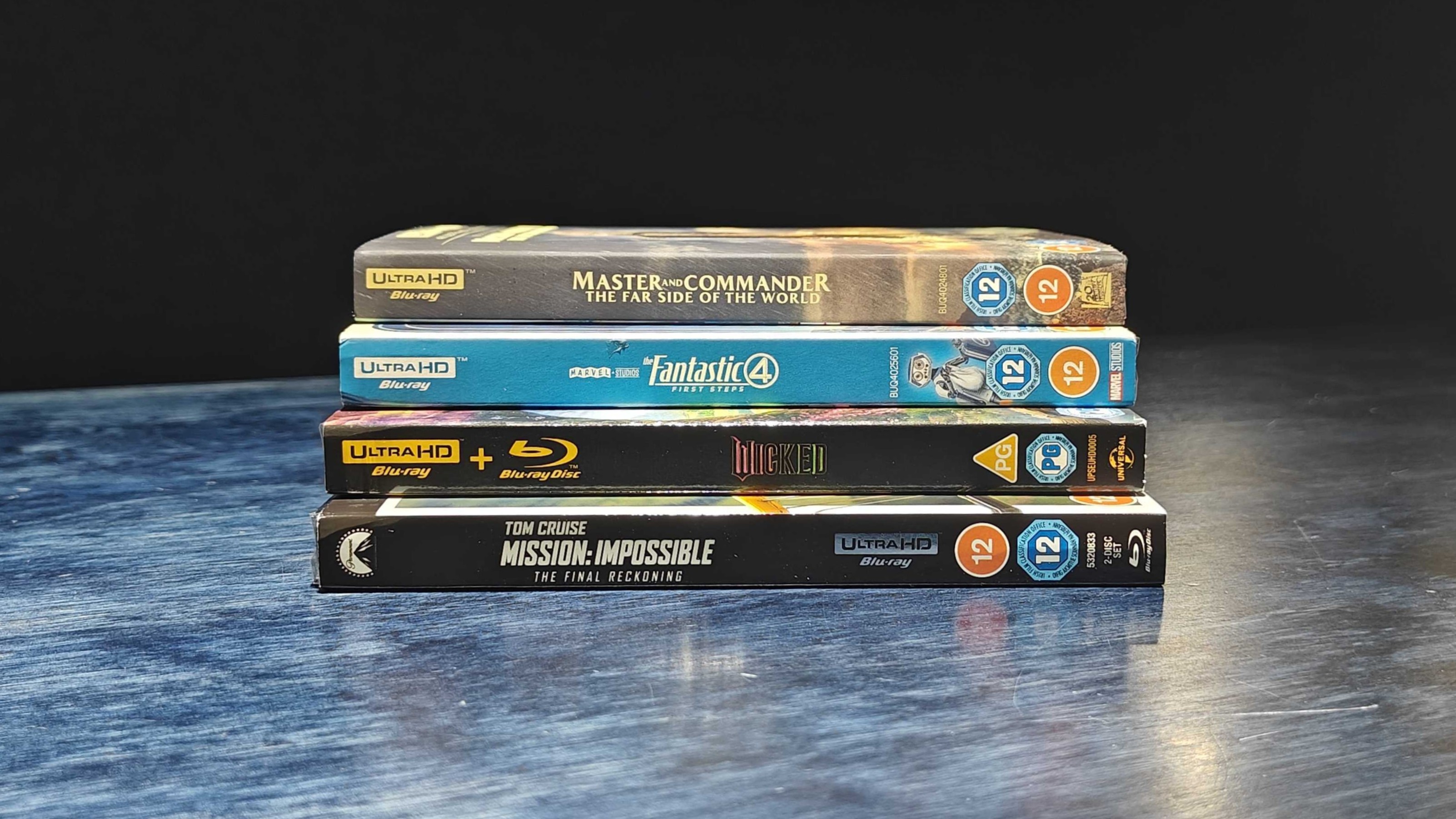What Hi-Fi? Verdict
While it has limitations that are brought to the fore by its new OLED rivals, the 43-inch QN90B provides a bright and exciting performance
Pros
- +
Superbly bright and punchy
- +
Excellent detail and sharpness
- +
Great for gaming
Cons
- -
Occasionally frustrating Tizen OS
- -
Disappointing sound
- -
Some backlight inconsistency
Why you can trust What Hi-Fi?
While once considered huge for a TV, the 40-43-inch category has come to be thought of as small in recent years and has been rather neglected by manufacturers as a result.
Samsung has done better than most, last year launching its near-flagship, Mini LED-backlit QN90A as a 43-inch model – a TV that proved very popular, particularly with gamers. Now we have the QN90B, which is very similar to its predecessor and, Samsung will be hoping, will be similarly successful.
There’s just one slight difference this time: Samsung’s top 43-inch TV is now up against the very first 42-inch OLEDs.
Price
It’s perhaps testament to this new level of competition that the QN90B has already been fairly heavily discounted from its launch price of £1300 / AU$1995. Shop around a bit and in December 2022 it can be bought for £999 / AU$1795.
Those in the market for a flagship-level TV at this sort of size will obviously also be considering those aforementioned new OLEDs. The Sony XR-42A90K is quite the step-up in price (£1295 / AU$2495), but the LG OLED42C2 is, at £999 / AU$1790, essentially identically priced to the Samsung QN90B.
Design

There’s something a bit old-school monitor about the design of the 43-inch QN90B, which has slightly different and marginally less satisfying proportions than its 55-inch-plus siblings. That isn’t to say that this isn’t a handsome TV in its own right, though. The QN90B is satisfyingly slim, at 2.7cm (1.1 inches), and the frame around the display is thin enough and black enough to all-but disappear.
The pedestal stand looks slightly ungainly, but its design is sensible: it’s narrow enough to make the TV easy to accommodate on most furniture, plus it’s got a very low profile and creates quite a large gap to the bottom of the screen, which is ideal for the placement of a soundbar.
The latest hi-fi, home cinema and tech news, reviews, buying advice and deals, direct to your inbox.
The bundled remote, like last year’s, is an absolute delight. Compact, ergonomic, and with a perfectly stripped-back button selection, it’s a joy to use, but it also has a solar panel on the back for charging via sunlight and even indoor lights.
Features

It’s a shame that the intelligence of the remote isn’t matched by the new version of the Tizen operating system. Samsung has copied the unpopular decision LG made a few years ago and switched from a pop-up system to a full-screen home menu. Unfortunately, this full-screen Tizen is also regularly quite slow in operation, particularly when the TV’s first switched on, and its layout is rather unintuitive.
The app selection is as excellent as before, at least, with every major streaming service present and operating in full 4K HDR where appropriate. The Apple TV app has joined Amazon Prime Video in offering HDR10+ content, which offers a slight boost in contrast and colours, but Samsung still doesn’t support Dolby Vision on any of its TVs.
Back to apps, and Samsung has been making a massive push to support game streaming. Most notably, its TVs are unique in having an Xbox app for cloud gaming, and there’s also an app for GeForce Now, which allows for streaming of PC games that you’ve bought via Steam.

Screen size 43 inches (also available in 50in 55in, 65in, 75in, 85in)
Type QLED
Backlight Mini LED
Resolution 4K
HDR formats supported HDR10, HLG, HDR10+
Operating system Tizen
HDMI inputs x4 (40gbps HDMI 2.1)
Gaming features 4K/120, VRR, ALLM
ARC/eARC eARC
Optical output? Yes
Dimensions (hwd, without stand) 56 x 96 x 2.7cm
Those who game the traditional way are brilliantly catered for by the QN90B, too, thanks to four HDMI 2.1 sockets that support 4K/120Hz, VRR and ALLM. There’s an HGiG mode for greater accuracy with many HDR games, and input lag is super-low. As mentioned, Dolby Vision isn’t supported at all, so that means Dolby Vision gaming is off the menu, but that will only be of concern to Xbox Series X gamers, and even then, probably not hugely so.
In terms of core TV technology, the big deal here is obviously the Mini LED backlight, which features LEDs significantly smaller than those in standard backlit TVs. This allows for far more to be crammed in across the panel, resulting in more accurate local dimming.
While Samsung doesn’t confirm specific numbers, we understand that the QN90B has around 360 independent dimming zones. That’s far fewer than a 4K OLED TV which, thanks to pixel-by-pixel control effectively has around 8.3 million dimming zones, but it’s vastly more than a typical LCD TV. What’s more, top backlit TVs such as this are generally capable of going much brighter than most OLED TVs. Again, Samsung won’t go into the numbers, but it's reasonable to expect the 43-inch QN90B to hit peaks of over 1000 nits. 42-inch OLEDs are expected to be more in the 700-800 nit range.
Picture

Starting with the super-challenging 4K Blu-ray of The Batman, the Samsung provides more insight into the dark corners of grimy Gotham than any other TV in its class. Shadow detail has nowhere to hide, even when the least processed Filmmaker Mode is selected. Unsurprisingly, given the Mini LED backlight, bold highlights such as the neon billboards of Gotham Square are also much brighter than they are from OLED rivals such as the LG C2 and Sony A90K.
On the other hand, while the QN90B is capable of reproducing very deep blacks by LCD TV standards, it often seems to choose not to, instead opting to raise the black floor somewhat in order to dig up those fine shadow details. The result, while great at times, looks a little grey and flat at others, particularly when compared side-by-side with the new OLEDs with which it suddenly finds itself in competition.
It’s also true that while some highlights in dark scenes are resolved in bold and punchy fashion, others are more subdued than they should be. It broadly comes down to their size and the intensity of the darkness around them, with the QN90B seemingly reticent to go the whole-hog with small, bright highlights in otherwise very dark shots, presumably for fear of creating blooming.
Switching to No Time To Die, again in 4K HDR, the QN90B is much more at home, with the largely bright presentation really playing to its strengths. There's lovely pop to the sunlight glinting off the Mediterranean as Bond and Madeleine drive the winding coastal road to Matera, and there’s superb sharpness and solidity to the rocky outcrops and the stunning town itself. Avoid the TV’s Dynamic and Standard modes (or reduce the Sharpness control contained within), and the sharpness never looks exaggerated. Detail is exceptional, too. If you’ve ever wanted to analyse every pore and freckle of Daniel Craig’s torso (each to their own), this is a great TV to do it with.
As you’d hope with a flagship QLED TV, the QN90B’s colours are possessed of a thrilling vibrancy. The TV’s got a slight preponderance towards red that’s not entirely accurate but that really does make images pop and isn’t so exaggerated as to make movies look unrealistic. What’s more, the Samsung’s vibrancy doesn’t come at the cost of subtlety or nuance, with less vivid shades being calmly expressed and blended.
The QN90B is an impressive handler of motion, too. The pan across the cemetery in No Time To Die is handled with excellent smoothness and clarity when using the default settings in the Custom Picture Clarity preset, and the same settings very rarely add any shimmer or unrealism to faster, less predictable movement. Samsung is probably now second only to Sony in terms of motion handling, with LG not far behind.
Where Samsung’s QLED TV does struggle against its OLED rivals is in viewing angles, as the picture loses a certain amount of colour and contrast as you move off-axis. OLED TVs such as the LG C2 and Sony A90K are almost perfectly consistent regardless of where you’re sitting in the room.
One other slight issue with the QN90B’s backlight is highlighted by the scene-setting white text that appears on the black screen at the start of Blade Runner 2049. Essentially, the text is brighter and more intense at the centre and dimmer at the edges, giving the whole image a rather convex appearance. This is again presumably down to the TV calculating the ratio of bright to dark content on the screen and applying different backlight control to different ‘zones’. OLEDs such as the LG C2 and Sony A90K don’t have the same backlight concerns, so reproduce all of the white text and the black background with consistent intensity.
Sound

Another area of relative weakness for the QN90B is its sound. Smaller TVs tend to struggle more than their larger counterparts when it comes to delivering convincing, engaging audio, but this Samsung is even thinner and lighter-weight in its delivery than expected. Despite the almost total lack of bass, there’s still an audible rattle to the enclosure when the set is challenged by the extra-deep bass that’s prevalent in Blade Runner 2049 and also present in the immediate aftermath of the cemetery explosion in No Time To Die. There’s a lack of dynamic range to the delivery, too, although this is to be at least somewhat expected from small TV speakers.
What’s more surprising is the TV’s inability to project sound much beyond the confines of its chassis, either to the left and right or, more importantly, forward and out into the room. The result is a delivery that’s neither atmospheric enough, nor engaging enough. The LG C2, which itself is far from a great-sounding TV, is significantly more spacious, exciting and weighty in its delivery, and that’s really saying something.
What saves the QN90B from a serious sonic drubbing is its clarity. It might not project into the room or thrill with its delivery, but its midrange is clear and fairly detailed, and that means that the majority of what you watch will be easy to follow, if not exciting.
Verdict

Putting the poor sound to one side – after all, you should really budget for a dedicated sound system with any TV – the 43-inch QN90B is a really good television faced with a new wave of intense competition. Said competition (the new 42-inch OLEDs offered by Sony and LG) means that this Samsung QLED’s weaknesses and strengths are equally brought into stark contrast.
As expected, it struggles comparatively in terms of viewing angles. Contrast is also a bit limited – the set is clearly capable of going both very bright and very dark, but for much of the time it seemingly can’t or won’t do both simultaneously. It also lacks the authenticity of delivery that some of the very best TVs offer.
And yet, it’s largely a delight to watch. With most content it’s brighter, punchier and more vibrant than its rivals, and without veering into obvious exaggeration. It’s fun, exciting and yet controlled in its delivery, and its motion-handling is really good, too. On top of that, it’s got superb gaming specs that are second only to those of the LG C2, and even then only by a tiny amount.
In summary, those looking for a premium performance at a compact size should seriously consider the QN90B. If it’s a bright, vibrant and exciting delivery you're after (and/or you’re going to be using your TV in a very bright room), this Samsung QLED could well be a better buy than one of its new OLED rivals.
SCORES
- Picture 4
- Sound 3
- Features 4
MORE:
Read our review of the LG OLED42C2
Also consider the Sony XR-42A90K
Read our Samsung UE43AU7100 review
Best 40, 42 and 43-inch TVs: these 'small' TVs are great value
Tom Parsons has been writing about TV, AV and hi-fi products (not to mention plenty of other 'gadgets' and even cars) for over 15 years. He began his career as What Hi-Fi?'s Staff Writer and is now the TV and AV Editor. In between, he worked as Reviews Editor and then Deputy Editor at Stuff, and over the years has had his work featured in publications such as T3, The Telegraph and Louder. He's also appeared on BBC News, BBC World Service, BBC Radio 4 and Sky Swipe. In his spare time Tom is a runner and gamer.
- Ketan BharadiaTechnical Editor

